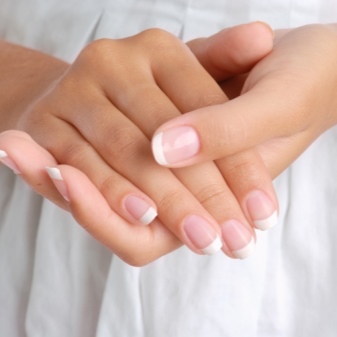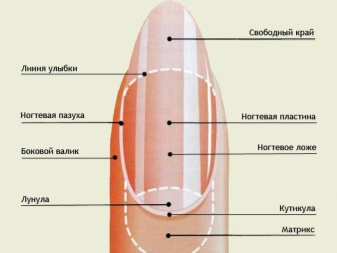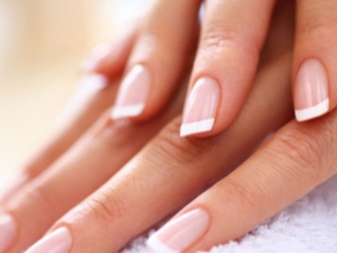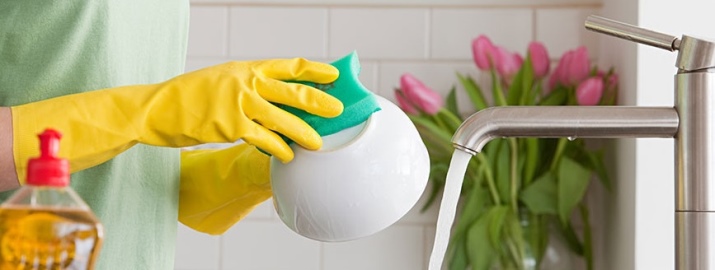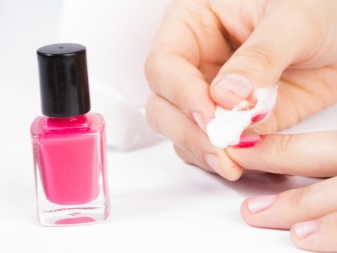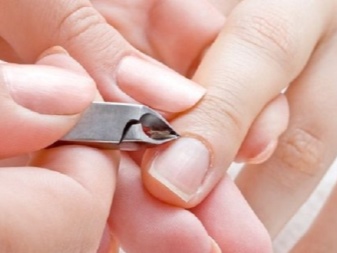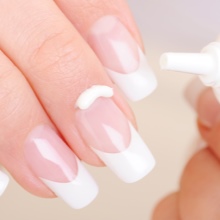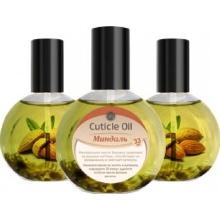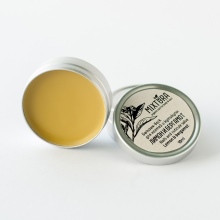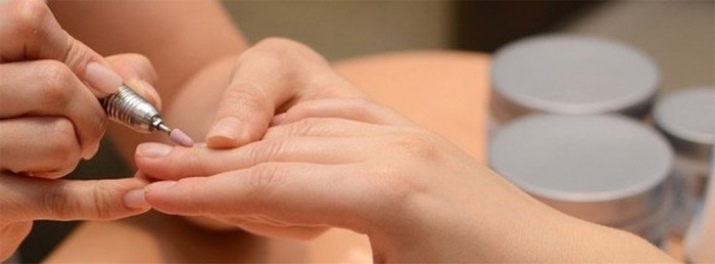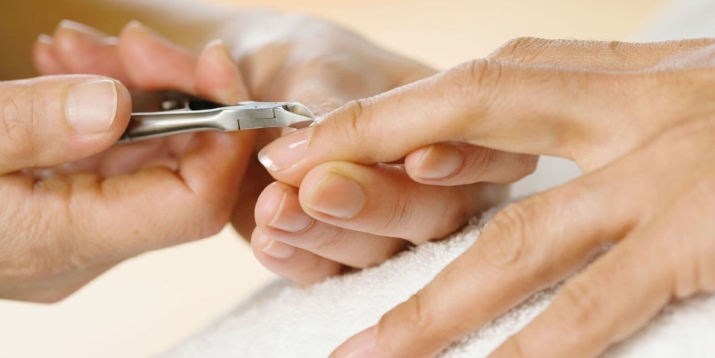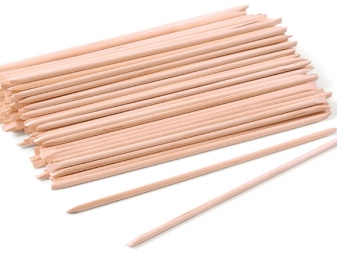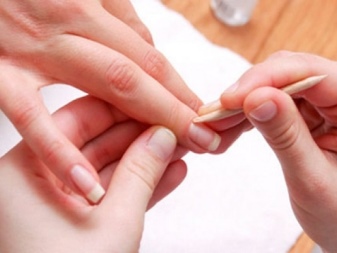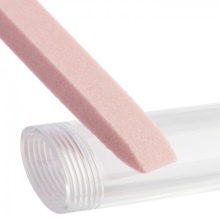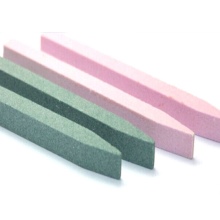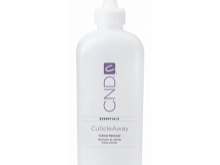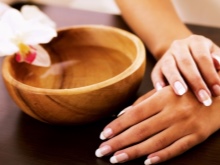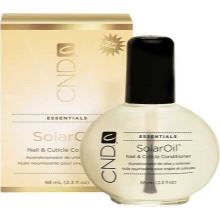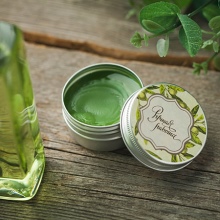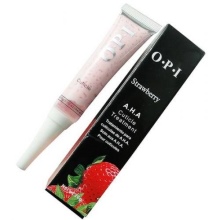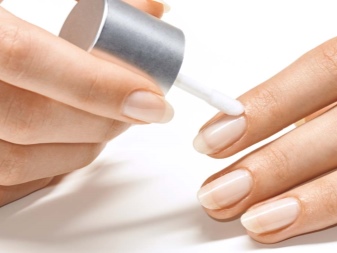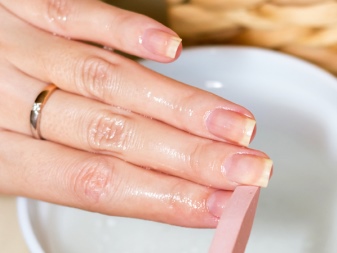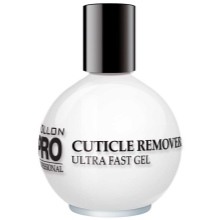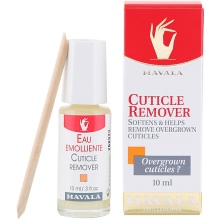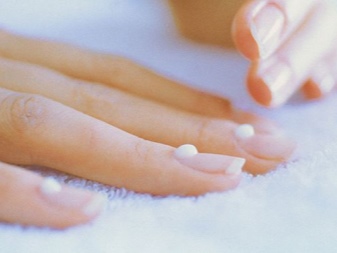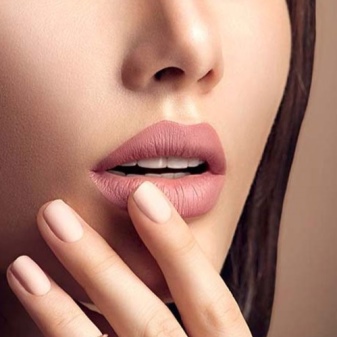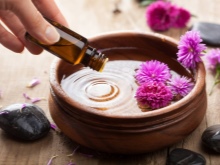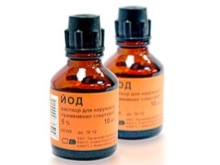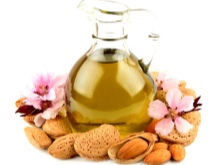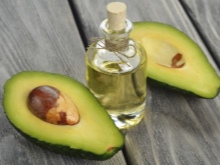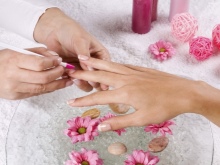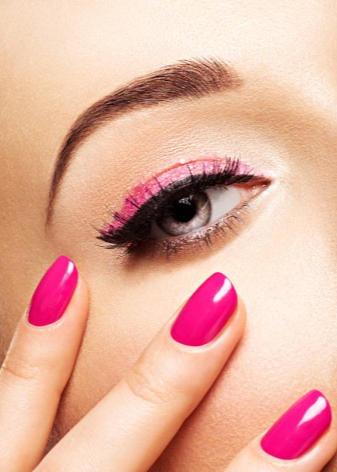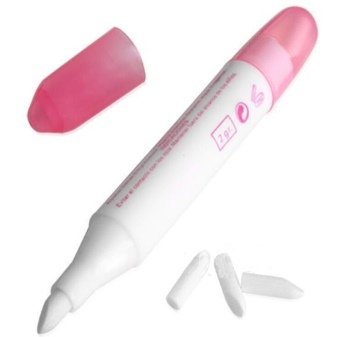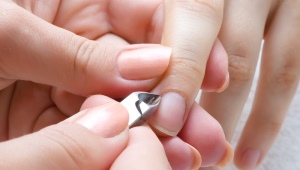All about the cuticle and its care
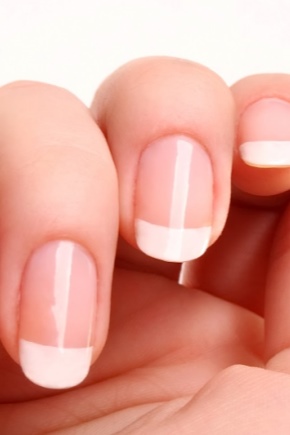
The cuticle is an important component of a competent manicure. As a rule, few people really care for her and are interested in information on such care. The presence of burrs, torn cuticle, dirty or folded - the first sign that you are not caring for your nails.
What it is?
The cuticle is a seal at the bottom of the nail, the so-called leathery cushion. It is located at a certain distance under the skin, and you cannot see it completely. Only the edge of the cuticle is accessible, already dried, and, in fact, dead - it is from it that the burrs start. In medical language, it is called pterigy and is located directly on the nail. The rest of the cuticle (eponych) is the tissue part of the matrix that surrounds the nail from the inside.
Why do you need?
First of all, the cuticle performs protective functions - it does not allow bacteria and various dirt to get under the nail into the growth zone. It is sealed, isolates the nail itself, its bed and matrix from the penetration of air and moisture.
The matrix is the root of the nail, the part where it begins to grow. It is easy to understand that if the matrix is damaged, it will adversely affect the health of the entire nail. It will begin to peel off, break down, grow slower. All this can lead to diseases of the nail and to the fact that the matrix will cease to produce substances necessary for the growth and normal functioning of the bed.
The cuticle is located near the matrix, it protects it from any trouble and physical or chemical effects.
By the way, the matrix has a continuation on the nail plate in the form of a moon - that same crescent, clearly distinguished from the rest of the nail and having a milder color. This part of the matrix is not protected by the cuticle, is more sensitive and consists of living cells, therefore it should also be looked after.
It depends on the matrix whether your nails are long or short, dense or brittle. This is a completely genetic moment, but correct care will help to slightly improve the condition of the nails and cuticle. If initially your nails were strong, the cuticle is healthy, and then they began to break and burrs appeared, then the problem is inside.
Care
Of course, the nail plate requires special care. But you never need to deprive the attention of the cuticle and nail bed, responsible for their normal condition and growth.
Despite the fact that the nail bed and the upper part of the cuticle are horny, they require certain care. Yes, the nail can stand the test of detergent or vigorous red lacquer, but it is better not to risk it. If you are going to wash dishes, work around the house or with chemicals, it is better to wear gloves. The action is easy, but will help keep your hands in a well-groomed form.
As for the special means, there are many of them - wax, pencil, creams, oils ... All of them are aimed at moisturizing and softening the cuticle, but they act in different ways. Step-by-step care procedure looks like this:
- Nail polish or shellac is carefully removed. using a solvent or special wipes.
- Upon request, the regrown cuticle is removed., with any of their methods, care will be about the same.
- One of the selected care products is applied on the nail plate - oil, wax or cream. The oil can be either purchased cosmetic (special blends in jars) or pharmacy - pay attention to grape seed oil, jojoba and avocado.They have high moisturizing performance and deeply nourish the cuticle and nail bed. If you need to whiten your nails, take a look at citrus oils - especially lemon. If you strengthen and accelerate growth - almond and bone, oil solution of vitamin E or A, as well as shea and coconut. Wax has, rather, polishing and sealing properties, it is effective in the fight against burrs and gives the cuticle elasticity, and the nails themselves - a healthy shine. Effectively using it with a polishing nail file.
Cream, it is desirable to handle the entire surface of the hands, just a little more thoroughly massage the fingers in the area of the matrix.
Periodically, you can use a peeling or scrub for nails and hands. It hides peeling, reduces the risk of inflammation and growth of the cuticle. This can be either a peeling of a roll, or a regular one; pay special attention to those peels, which include vitamins and fruit acids, which are responsible for removing only dead skin parts without affecting healthy ones.
How to delete?
There are several ways to remove the cuticle. Each is selected based on your personal preferences, as well as the state of the cuticle and nail. Remember that removing the cuticle is impossible forever, but careful care and periodic removal procedures will help to significantly improve its appearance.
- Hardware The main tool is a grinding machine that works like a soft polishing file. It acts very gently, does not touch the living cuticle, removes only the keratinous. Thus, it is the safest and most popular way, although it has its own subtleties. For example, you can’t trust your hands to an amateur who can damage both a nail, a protective layer, and a live cuticle. Hardware cuticle removal is a salon procedure, and it cannot be done at home.
- Trimmed. The most dangerous and old method. The fact is that the cuticle is naturally cut with special devices - nippers, which are called “tweezers”, trimmers or scissors, thereby having a rather rough and aggressive effect on the skin around, the matrix and the living part of the cuticle. Moreover, the procedure is ungrateful - the skin, seeking to compensate for the loss, begins to regenerate faster and the cuticle grows coarser and more dense, as a result of which it must be removed more often. In addition, during the procedure there is a high risk of damaging the nail bed and infecting the growth zone. If you still decide on a trimmed manicure, then remember that the master must first thoroughly steam out the skin rollers, moisturize or nourish them with special means, and then treat with an antiseptic and healing cream.
- Unedged (European). The safest and most durable. In principle, it depends on the proper and constant care of the cuticle. You must massage your nails in the growth zone, moisturize and nourish, soften the cuticle with a remover (oil or cream). Next, take an orange stick and her cuticle gently moves to the base of the nail. This should be done already when the remuver acts and dries - the skin should be completely dry. After this, the hands and especially the cuticle area need to be moistened.
Removal tools
If in the salon a competent master himself is able to pick up a cuticle remover, then at home you have to buy everything at once. For a start it is worth saying that at home it is recommended to use only the European uncut method. He is the safest.
For it, you will need an orange stick - a tool ranging in size from 9 to 18 centimeters and a width from 3 to 5, with one beveled edge and the other pointed. Sticks in packs are on sale and cost from fifty to three hundred rubles. Orange stick is a disposable instrument, it absorbs moisture very well, and it should be stored in a clean and dry place.
An additional advantage of this tool - it is suitable for removing dirt under the protruding part of the nail.
As an alternative, Europlume can be considered. This is a soft and smooth ceramic file that does not damage the cuticle and nail. It is also used for polishing. There are several types of pumice, depending on the color. Gray pumice is the most gentle, yellow is tough, and pink is the golden mean between them.
You will also need to purchase a special remuver - a means for softening the cuticle. It is sold as an oil or cream and acts on the cuticle in such a way that it can be easily picked up with an orange stick and separated from the nail plate. As a remover, castor oil can be used, as well as homemade baths with sea salt and essential oils.
Directly to care for the cuticle after its removal, you will need a good antiseptic without alcohol or base fatty oil.
What means to choose?
Choosing the means to care for the cuticle, you should focus on your preferences and desires. If you want to moisturize and nutrition for every day, take a look at the base oils. If you need to polish the nail and smooth the burrs - to wax. A quality cream should be in your care anyway.
Remember that high-quality cuticle removers do not have to be expensive, but do not get fooled at very low prices - be sure to check the shelf life and composition of the product. Little life hacking - read reviews about the tool you want to buy, and see its rating. According to advanced readers, you can accurately determine the means for yourself.
How to move?
For pushing the cuticle is used orange stick or evropemza. They, and only they, are capable of pushing the cuticle under the skin correctly and without damage. About any toothpicks or cotton buds can not be considered.
The action itself is as follows:
- A special softening agent, a remuver, is applied to the cuticle. This can be a liquid, solution, gel, oil or something else - depends on the manufacturer.
- Next you need to wait for it to dry completely. When your hands are completely dry, grasp the orange stick or europlume and, moving from the tip of the nail, shift the cuticle with a shifting motion. It should detach from the nail without painful sensations and move away with a solid roller.
- After this, treat the nails with an antiseptic and apply a moisturizer or a product that can slow down the growth of the cuticle.
How to soften?
To soften the cuticle traditionally use a remuver. This is a special softener or cuticle remover - keratolytic, which does not affect the living part of the cuticle, but is actively working with dead. Keratolytics destroy keratin keratin - a protein that forms the nails, and therefore can soften the cuticle.
The composition of professional means to mitigate may include fruit acids or an artificial form of urea - ammonia and carbon dioxide.
Removers not only soften the cuticle and facilitate its proper removal, but also have moisturizing, antiseptic and healing properties.
Removers are available in the form of oil mixtures, liquids, gels, creams. However, it is also possible to soften the cuticle with ordinary base oil or special polished baths.
How to clean at home?
The procedure for removing the cuticle at home should be performed according to all the rules of hygiene. That is why it is recommended to use the uncut method - so the probability of infection is the lowest. Properly selected materials - a remuver and an orange stick - this is exactly half of the success in removing the cuticle. In the case of a European manicure, the actions are performed in the following sequence:
- The cuticle and the area around it is disinfected with hydrogen peroxide or chlorhexedine.
- A remuver is applied to the cuticle;
- The orange cuticle gently moves, and nourishing oil or cream is applied to the nail.
Why fuss?
The cuticle can be "burr" for several reasons. The first and most common is the lack of moisture and nutrients. In this state, the cuticle begins to dry, grow, and it needs to be either well moistened with oils and creams or removed.
By the way, about the removal. Improper procedure for removing the cuticle can lead to its rapid overgrowth due to the needs of the body will recover faster. Most often, this is the cutting method.
Also, the cuticle sometimes fades, because the skin of the hands is dry on its own - the type of skin it has, and the cuticle is rough and tough. In this case, you need to thoroughly rethink your hand and nail care and get more nutrients. In case of removal, it is better to contact the master of unedged manicure or hardware by the European method. This is a rather superficial way, but it will definitely save you from the "fringe" and burrs.
Inflammation and treatment
If cuticle is not cut correctly, it can become inflamed.
First of all, it is necessary to identify the causes of inflammation. It can be caused by improper care, infections, physical injuries, the use of aggressive household chemicals, the use of poor-quality nail polishes, improper manicure procedures, improper processing, poor hygiene, vitamin deficiencies - and this is only part of the most commonplace and most common causes. There is also a complication after hormonal diseases. Remember that nails are indicators of changes occurring in the body, and sometimes the usual redness or lamination may be the beginning of some serious illness.
The symptoms of the cuticle disease are as follows - a thickening of the nail, the appearance of grooves or chipping on the nail bed itself, increased fragility. Also, the nails exfoliate due to damage to the cuticle.
Special attention should be paid to inflammation. This is a really common occurrence caused by improper circumcision or care. The most common fungal and infectious diseases, manifested by inflammation and scaling in the area of the cuticle. It may swell, turn red, burrs may begin to cause significant discomfort and start to peel off. If time does not take up the treatment, there may appear such an unpleasant moment as a purulent abscess. There will be itching and soreness. In this case, treatment at home is also possible, but if you are not confident in yourself, consult a specialist in a salon or hospital.
You will need a comprehensive treatment - for example, baths with iodine and sea salt. This procedure should be done during the week every day. Additionally, you can lubricate it several times a day with some base oil - almond, avocado, castor oil.
In the case of an abscess, you must use tweezers. Move them to the cuticle, pressing down to pus found a way out. When the abscess bursts, without releasing the cuticle, push down on the pad of your finger, so that the pus is gone completely. Treat the affected area with hydrogen peroxide.
As a prevention, remember a few rules. Do a manicure only with a professional, make sure that he puts on gloves every time. If possible, give up the deep hardware or cut manicure, use only disposable orange sticks.
Do not neglect the rules of hygiene and try to avoid physical injuries of the nail, use only high-quality varnishes and care products.
How to make up nails, without having soiled a skin?
Many girls are concerned about the question of how not to touch the cuticle during home manicure, as it is quite problematic to remove a varnish stick moistened with nail polish remover from it.This problem is solved very simply.
You can apply a thick winter cream, PVA glue or Vaseline on the cuticle and side rollers. Such a greasy or, on the contrary, dry texture will not allow the varnish to paint over the skin and nail area, too, so these tools are applied as carefully as possible so as not to hurt the nail plate. They are removed after drying the varnish with a cotton swab or pulling the film.
Also in the shops of cosmetics sell special protective coatings. They look like ordinary varnish, are sold in the same packages and are applied with a similar brush. One difference - paint them on the cuticle around the nail. So called "skin defenders"Are a complete protection from varnish - drying up with an elastic film, they simply do not allow it to get on the skin. At the end of the manicure "defenders" are removed with a light pulling motion. They do not leave marks on the skin, do not dry the cuticle, and in no way affect the quality of the nails. This silicone film does not penetrate deep into the nail is a great solution for home manicure.
You can pay attention to the special nail polish remover. Its rod is dipped in nail polish remover and it is thin enough that allows you to remove excess cuticle after you have painted your nails.
If you do not have the opportunity to buy a "defender" or do not sell it in your city, then remember the technique of applying varnish without harm to the cuticle. Initially, visually divide the nail into two vertical and even halves and apply a base coat on the nail, which is responsible for adhesion of the varnish, its durability and protecting the nails from damage or excessive corrosive pigment.
- Take a little varnish brush, squeeze it on the neck. Each coat of varnish is still applied after the previous one has dried. Put a small dot near the moon and gently push the varnish to the border with the cuticle. This is the most crucial moment and it depends on it whether you fill the cuticle with varnish or not. Next, moving the stretching movements, stretch the point to the middle of the first half.
- Turn the brush slightly and paint the side without touching the side roller. - you can pull it off with free fingers. The movements are all the same - stretching.
- Now paint the entire nail completely. Wait for drying and apply a second layer using the same technique. Complete your work top.
In the next video clip you will see two ways to remove the cuticle.
